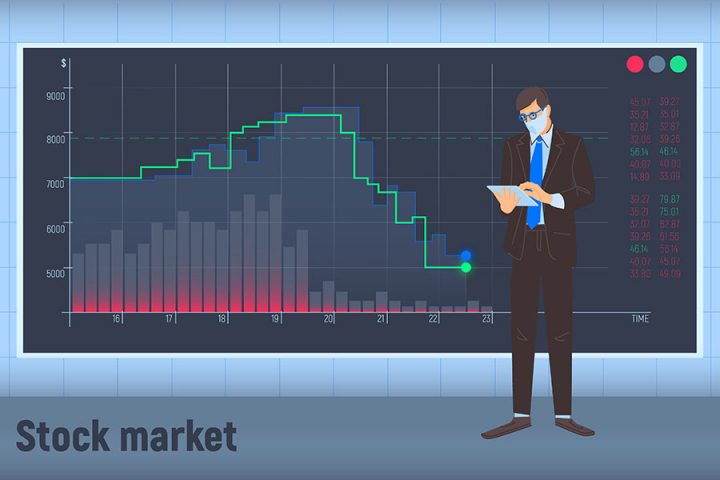The stock market is a dynamic and complex financial ecosystem where investors buy and sell securities like stocks, bonds, and derivatives. In this article, we will delve into one crucial aspect of stock trading that often goes unnoticed by novice investors: the stock market spread. Understanding the spread is essential for making informed investment decisions and optimizing your trading strategy.
What is the Stock Market Spread?
The stock market spread, often referred to simply as “spread,” is the difference between the bid price and the ask price of a security. To grasp this concept fully, let’s break it down:
- Bid Price: The bid price is the highest price a buyer is willing to pay for a security at a specific moment. It represents the demand for the security among buyers.
- Ask Price: On the other hand, the ask price is the lowest price at which a seller is willing to sell the same security. It reflects the supply of the security among sellers.
The spread is, therefore, the monetary gap between what buyers are willing to pay and what sellers are asking for. It serves as a fundamental indicator of market liquidity and plays a significant role in trading dynamics.
Also Read:
Importance of Spread in Stock Market
Understanding the spread’s importance is crucial because it directly impacts your trading experience. Here are some key reasons why spread matters:
- Liquidity Gauge: The spread provides insights into a security’s liquidity. Narrow spreads indicate higher liquidity, making it easier to buy or sell a security quickly.
- Cost of Trading: The spread represents the cost incurred while executing a trade. It’s an essential factor to consider when calculating potential profits or losses.
- Market Efficiency: A wider spread may indicate lower market efficiency, as it suggests a larger gap between buyers and sellers’ expectations.
- Volatility Indicator: Spread can fluctuate with market volatility. It tends to widen during uncertain times and narrow when markets are stable.
Factors Influencing Spread
Several factors influence the spread in the stock market. It’s essential to be aware of these elements to make informed trading decisions:
- Market Conditions: Market volatility, trading volume, and economic events can impact spread width.
- Security Type: Different securities, such as stocks, bonds, or options, may have varying spread levels.
- Liquidity of the Security: Highly liquid securities often have narrower spreads compared to less-traded ones.
- Broker’s Role: The broker you choose can affect the spread, as brokers charge their own commissions and fees.
Bid and Ask Prices
Understanding bid and ask prices is pivotal when considering the spread. Here’s a simplified example:
- If the bid price for a stock is $50, and the ask price is $51, the spread is $1 ($51 – $50).
This $1 represents the potential cost to a buyer, as they would be acquiring the stock at $51 and selling it at $50 in the event of an immediate sale.
Also Read: Forex Spreads Trading Tips & Strategies
Calculating Spread
Calculating the spread is straightforward. It’s merely the difference between the ask and bid prices. The formula is as follows:
Spread = Ask Price – Bid Price
Types of Spread
In the stock market, you’ll encounter two primary types of spread:
- Fixed Spread: A fixed spread remains constant, regardless of market conditions. It is typically offered by market makers.
- Variable Spread: Variable spreads can fluctuate based on market volatility and liquidity. They are more common in volatile markets and often associated with ECN brokers.
Impact of Spread on Trading
The spread can significantly impact your trading outcomes:
- Higher Spread Costs: A wider spread means higher transaction costs, which can eat into your profits.
- Slippage Risk: In fast-moving markets, the actual execution price may differ from the expected price due to spread fluctuations, leading to slippage.
Strategies to Minimize Spread Costs
To minimize spread costs, consider the following strategies:
- Choose Low Spread Securities: Opt for securities with narrower spreads, especially for day trading.
- Use Limit Orders: Placing limit orders allows you to specify the maximum price you’re willing to pay or the minimum price you’ll accept, helping you avoid unfavorable spreads.
- Trade During Liquid Hours: Trading during peak market hours can lead to narrower spreads.
Spread in Different Markets
The concept of spread extends beyond stock markets. It’s prevalent in various financial markets, including:
- Forex: In the foreign exchange market, spread represents the difference between the buy and sell prices of currency pairs.
- Commodities: Commodity markets also have spreads, which vary depending on the specific commodity being traded.
Conclusion
In conclusion, understanding stock market spread is vital for any investor looking to navigate the complex world of securities trading. It affects your trading costs, risk exposure, and overall trading experience. By incorporating this knowledge into your investment strategy, you can make more informed decisions and potentially enhance your financial success.
Also Read: Mastering the Art of Spread Trading Strategy
FAQs
- Is a narrower spread always better for traders?
- While narrower spreads are generally preferred, it’s essential to consider other factors like liquidity and market conditions. Sometimes, wider spreads may be acceptable depending on your trading goals.
- Do all brokers offer the same spreads?
- No, spreads can vary significantly between brokers. It’s advisable to compare spreads among different brokers before choosing one.
- Can I negotiate spreads with my broker?
- Some brokers may offer negotiation options, especially for high-volume traders. It’s worth discussing with your broker.
- How often do spreads change during trading hours?
- Spreads can change frequently, particularly in highly volatile markets. It’s crucial to monitor them closely, especially if you’re engaged in active trading.
- Is the spread the only cost associated with trading?
- No, there are other costs like commissions and fees that traders need to consider. The total cost of trading includes these factors in addition to the spread.
